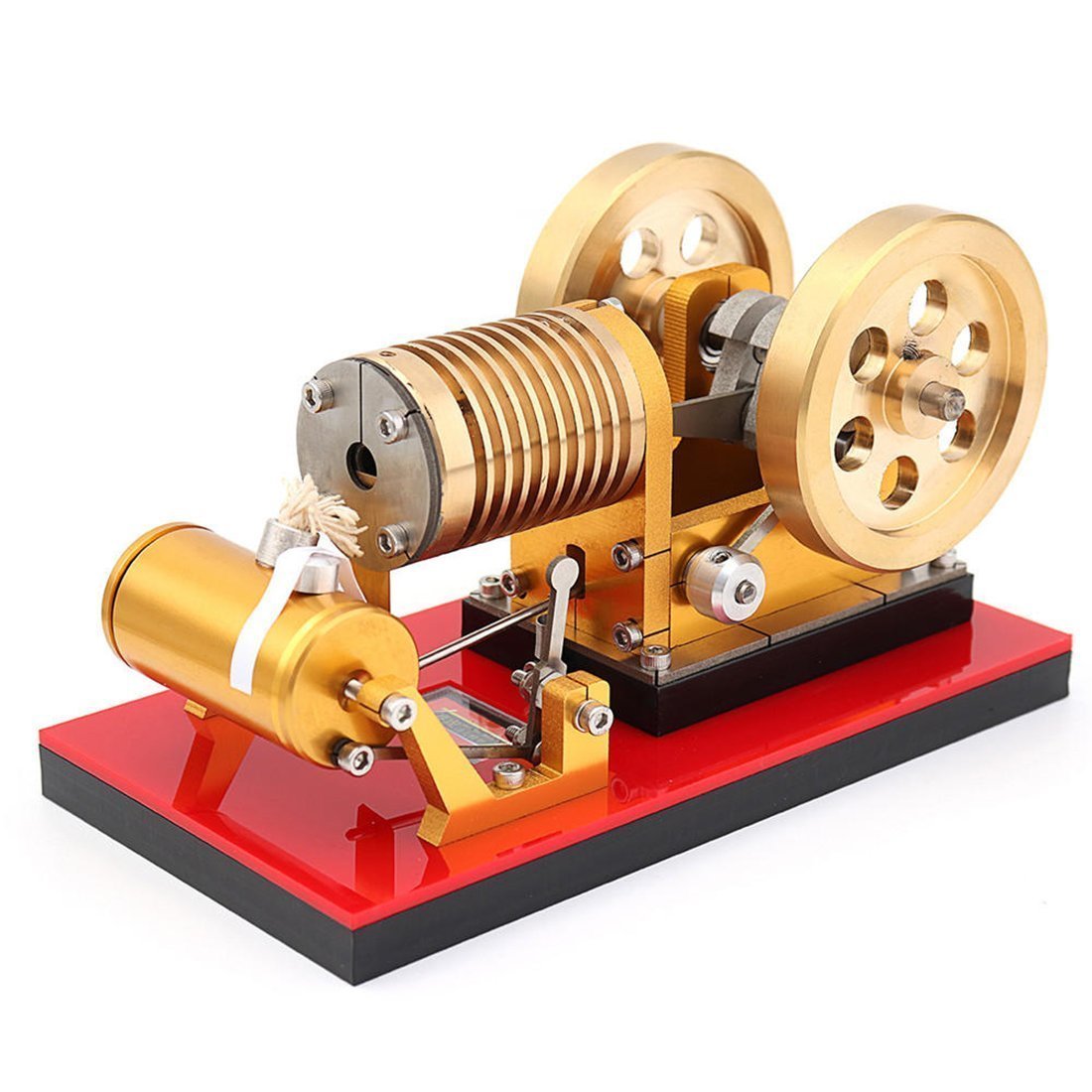
How does Vacuum Engine Work?
What's Vacuum Engine?
A vacuum engine (also called flame-licker engine, flame-engine, flame-eater engine, flame-dancer) derives its force from air pressure against one side of the piston, which has a partial vacuum on the other side of it. At the beginning of an out-stroke, a valve in the head of the cylinder opens and admits a charge of burning gas and air, which is trapped by the closing of the valve and expands. Towards the end of the stroke the charge comes into contact with a water- or air-cooled part of the cylinder and is chilled, causing a sudden drop in pressure sufficient to pull the piston – which is open towards the crank – back on the return stroke. The valve opens again in time for the piston to expel the burned gases before the next out-stroke begins.

How does Vacuum Engine Work?
In a vacuum motor, the partial vacuum is created by an external pump. These motors were commonly used to power railway turntables in the UK, using vacuum created by a steam locomotive's vacuum brake ejector. The operating principle is similar to a steam engine – in both cases power is extracted from a difference in pressure.
Unlike the ideal Otto cycle engine, the vacuum engine relies on a constant heat source provided by burning fuel. As mentioned above, a valve allows an intake of heat into the piston chamber. Estimating the heat in or Qin is constant in the controlled volume space, the ideal gas equation PV = nRT implies an increase in the pressure of the piston chamber. After the valve closes, the piston undergoes an adiabatic process during the downward stroke. Once the piston reaches the bottom of its stroke, the chamber is cooled either by the surrounding air or water, and the resulting Qout forces the pressure in the piston to decrease. The system then undergoes another adiabatic compression of the gas in the chamber, which is subsequently released by the valve at the top of the cylinder's stroke, while simultaneously allowing new heated gas to enter the chamber.
One of the major issues that this engine encountered while being developed was that the efficiency of this model was extremely poor in real applications. Because the heat source is not contained to a specific area, only a small portion of the potential fuel is being consumed to power the engine. Because Engine efficiency is defined by the relationship between the amount of work done and the potential energy in the fuel consumed, it can be seen that in the vacuum engine only a small amount of the burning fuel is being used to power the engine. The rest of the fuel energy is lost to the surrounding atmosphere.
A vacuum system can be used for power transmission, although the maximum power that can be transmitted to a vacuum motor is less than conventional pneumatics. There is an optimum pressure for the operation of a vacuum power transmission system, of around 0.4 bar (8 psig), as Downie also shows. Although less efficient than pneumatics, it can be perfectly workable. For example a 22 mm (7/8") pipe on vacuum can transmit as much power on 0.4 bar (8 psig) as a 6 mm (1/4") pipe on 8 bar (100 psig). The system is efficient enough that Boulton and Watt used vacuum power transmission in their factory. They called the vacuum main in the factory the ‘spirit pipe’.
Summary
The vacuum engine is an atmospheric engine, since here the external air pressure does the work (comparable to the first gasoline engine). As a result, the maximum piston force is limited to the product of piston area and air pressure.
More precisely, it is a vacuum motor, which is popularly also called a flame eater. He is one of the hot air engines, but unlike the Stirling engine is an open system.
Top 3 Popular Vacuum Engine Models from enginediy.com
1, Vacuum Engine Flame-licker Engine Flame-eater Engine Model Kit Educational Toy
2, Helicopter Design Vacuum Engine
3, High-end Professional Edition Flame Eater Engine Vacuum Engine
Get it now: www.enginediy.com/collections/vacuum-engine
Engindiy.com home: www.enginediy.com
Enginediy.com all products: www.enginediy.com/collections/all
Enginediy.com blog: www.enginediy.com/blogs/stirling-engine

Leave a comment